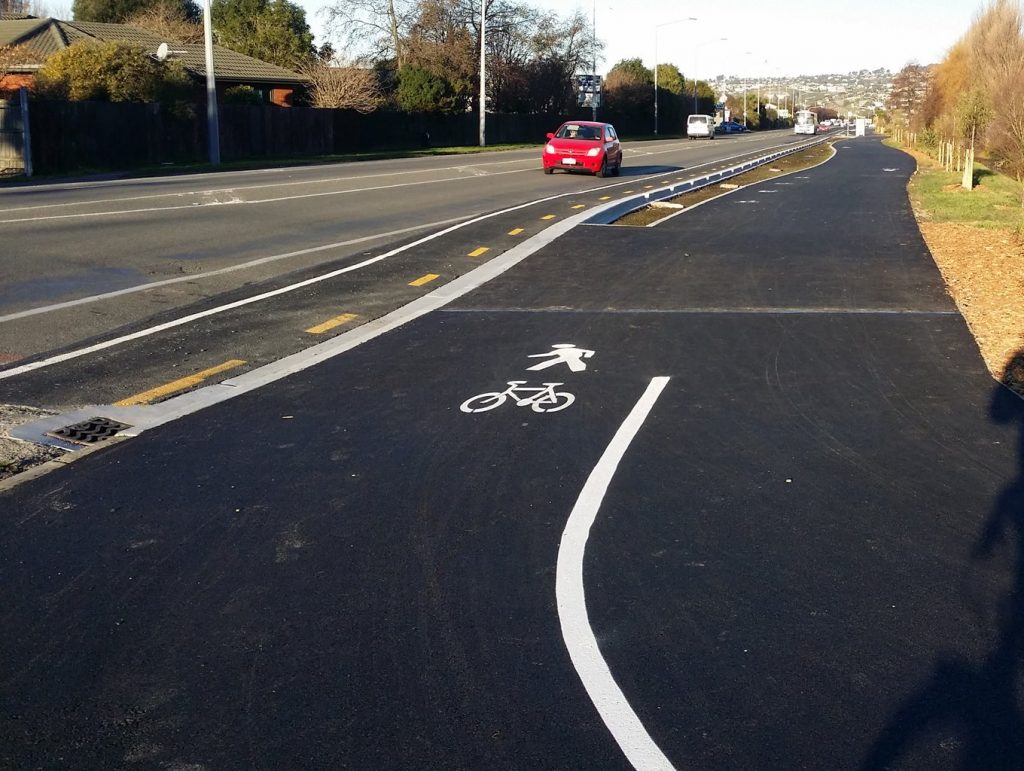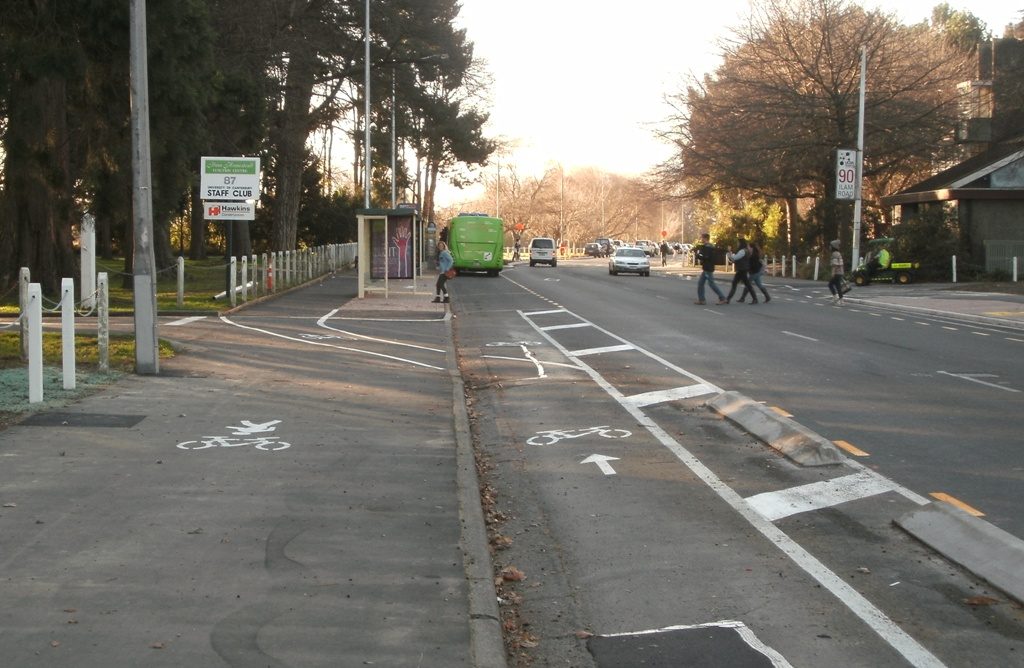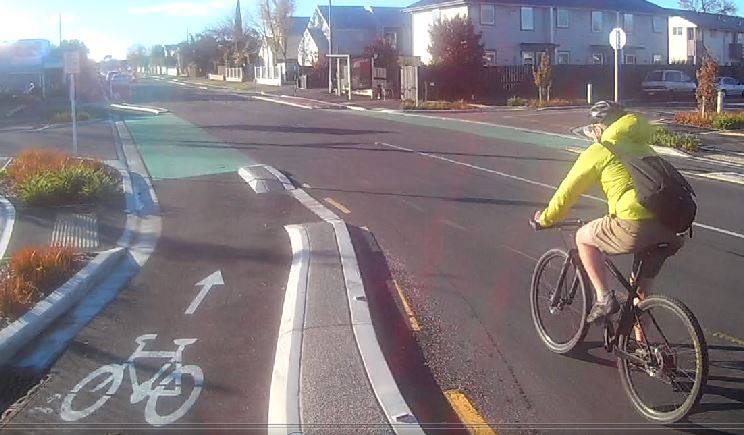With the recent opening of the next stage of the Rapanui – Shag Rock cycleway along Linwood Ave, a regular grumble heard on social media was how riders weren’t using the new central median facility, preferring instead the existing on-road cycle lanes. The thing is though, that was deliberate…
 It’s about having options for the wide range of cycling skills and confidence. Many confident people already riding are happy with the existing cycle lane; it’s reasonably direct and certainly quicker than going down the middle. But a lot of new people (including kids to the local schools) probably aren’t comfortable with that option, next to lots of busy traffic; for them the new separated cycleway is a godsend (and also very pleasant under the trees and away from the traffic noise). Each to their own…
It’s about having options for the wide range of cycling skills and confidence. Many confident people already riding are happy with the existing cycle lane; it’s reasonably direct and certainly quicker than going down the middle. But a lot of new people (including kids to the local schools) probably aren’t comfortable with that option, next to lots of busy traffic; for them the new separated cycleway is a godsend (and also very pleasant under the trees and away from the traffic noise). Each to their own…

It’s not the only example around Christchurch. Off the top of my head I can think of:
- Ilam Rd near university and Ilam School
- Wigram-Magdala overbridge along the Little River Link
- North Parade near Shirley Intermediate

People who cycle typically span a far wider range of abilities and experience levels than drivers (e.g. how many 10-year olds do you know that drive?). So it’s not surprising that providing a “one size fits all” cycleway can sometimes be difficult. I’m a big fan of providing alternate options, formal or informal, to address this variance in cycling skill; it can also help to quell the grumbles about new cycleways by existing riders.
-1024x488.jpg)
Another option that is always available too is simply riding on the street. It’s funny how people can get quite worked up about “cyclists” not using the big expensive cycleway that’s just been provided (hint: it’s not mandatory…), yet defend to the death the right to drive in any street they wish. One could ask “we just built an expensive motorway for you; why are you still using the parallel street?” Obviously the answer is that sometimes they need to go to a different destination that the motorway can’t provide; in the same way, a cycleway doesn’t always go where you need to go (e.g. a destination on the other side of the road).

It’s great to see the roll-out of the new cycleway network and it’s opening up riding places by bike to a wider audience. Sometimes there is room to provide multiple cycling options to suit different needs (e.g. safety vs directness). But we do also have an existing perfectly legitimate cycling network called streets that you are also welcome to use if it is more practical.
What do you think about providing multiple options for cycling?

-1200x608.jpg)
Yes and why do we need to provide on-street parking as most parks are empty most of the time anyway. Can we not make better use of these empty spaces?
I travel too fast to use many of the shared pathways, so its safer for the pedestrians if I just get on the road. Cambridge Terrace is a prime example of this – too many spacially-unaware walkers – both tourists and locals.
Then you get bike lanes that are blocked by one rider – St Asaph shows this – I can get all up their backwheel or I can just go around on the roadway.
There’s no requirement to use a cycle lane, and the only roads where you can’t ride a bike are clearly labelled, like Motorways, the Lyttelton Tunnel, etc.
Having had years of single bike-width cycle lanes, I think the concept of two-bike-wide separated cycleways is still a bit novel to many people who just ride in the middle of them out of habit. It will take time to get people used to keeping left, although a gentle bell ring or “excuse me” can go a long way now…
How does one identify a cycle lane that is meant to fit two cyclists in the same direction rather than just one? I ask as somebody who has been cycling in central Christchurch for ten years and didn’t know there were two different types. None of the new separated lanes (Colombo, Tuam, St Asaph) seem wide enough for two bikes going at a good clip.
Colombo wouldn’t be wide enough, but Tuam and St Asaph cycleways are at least 2.0m wide, enough for a couple of bikes. Was never an issue with on-road painted cycle lanes (could just pass using the adjacent traffic lane), but new kerbed-in cycleways need to be wider (future-proofed for growing demand). I guess the test would be to ride on the lefthand side and see if someone tries to get past…